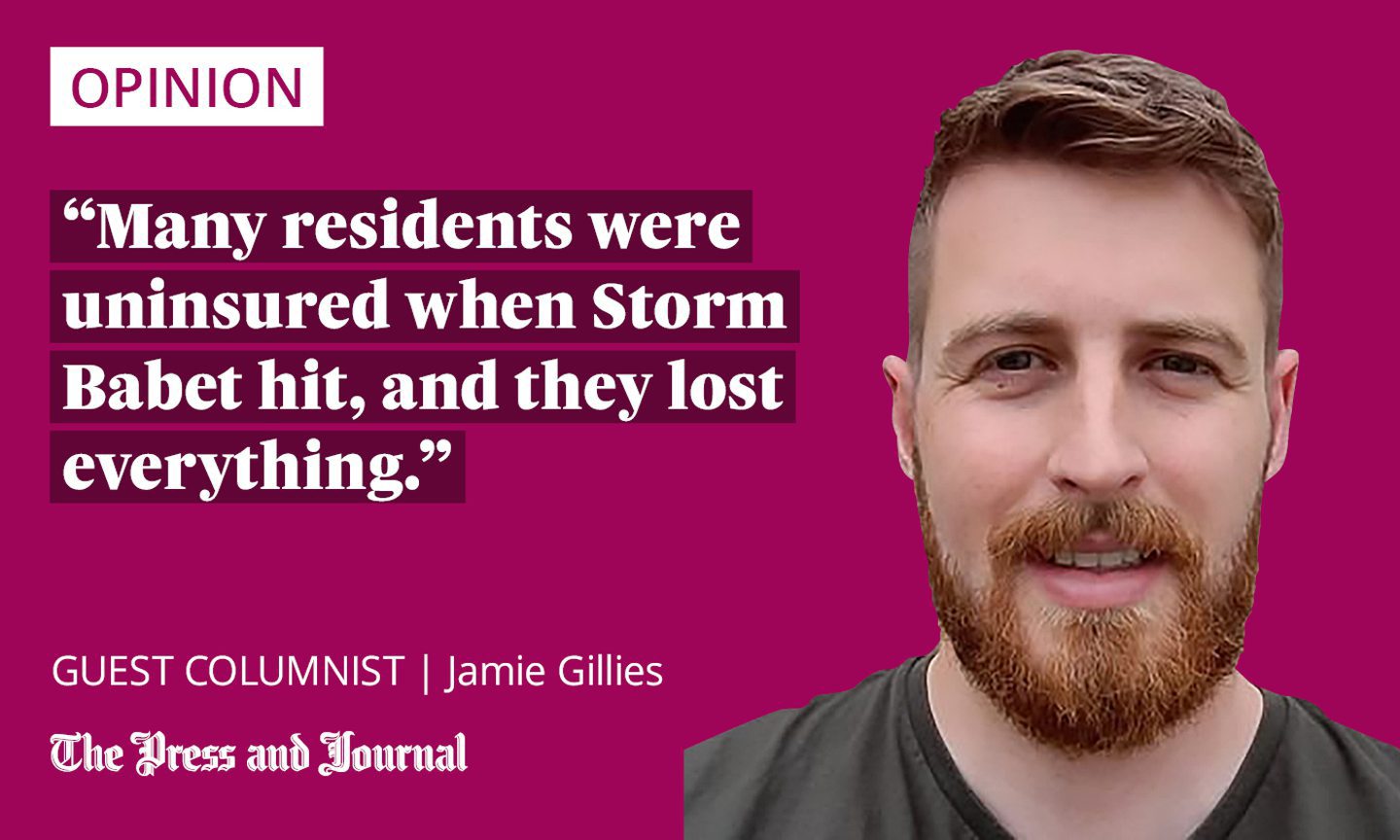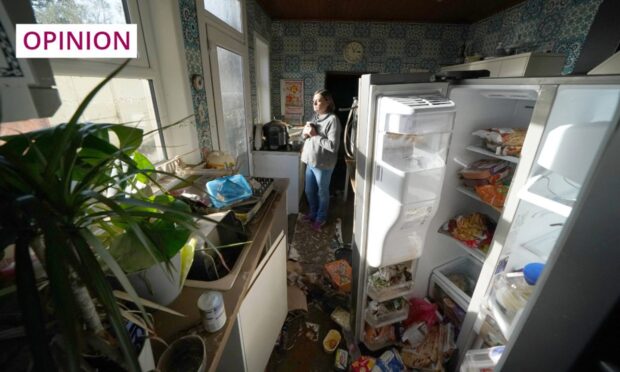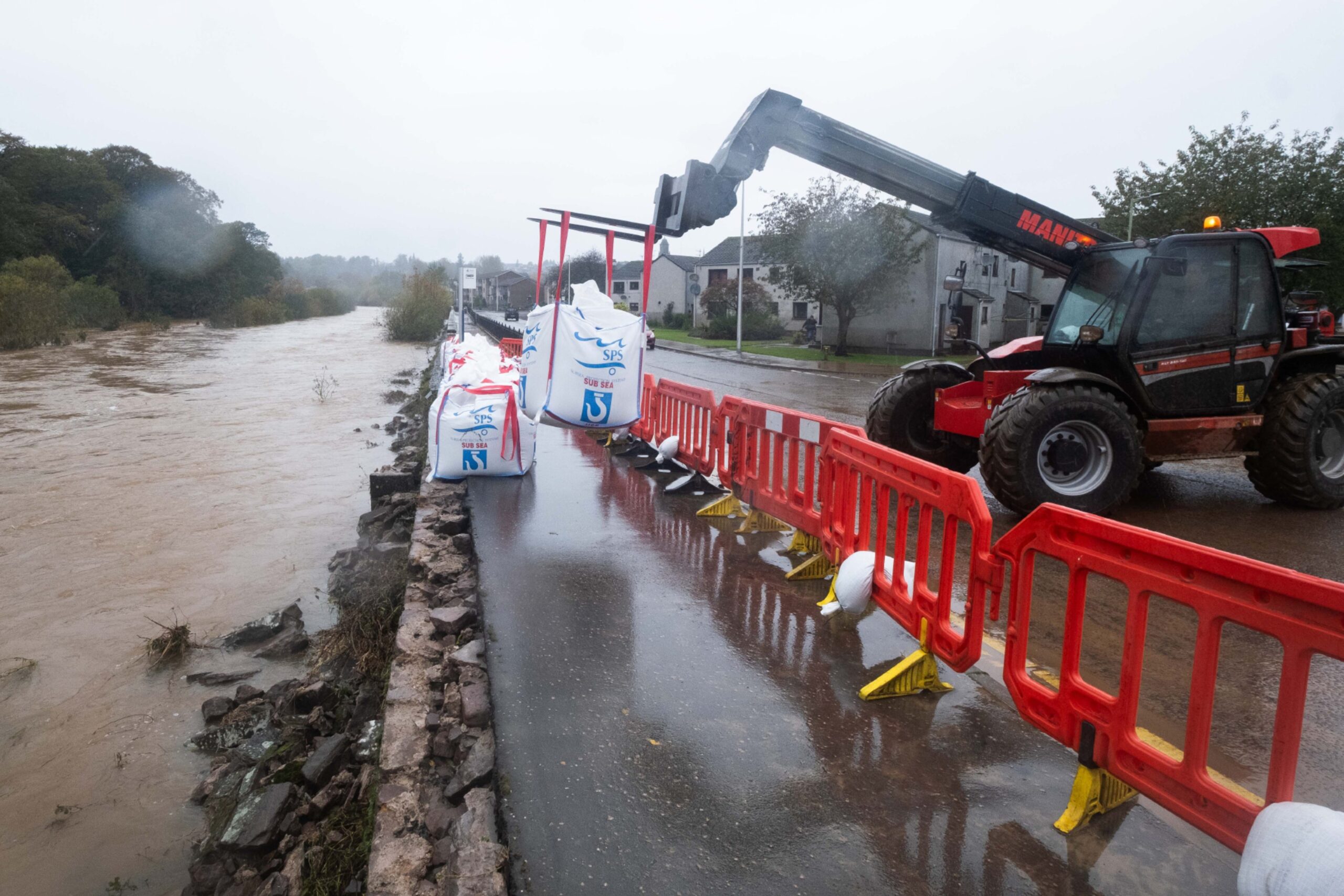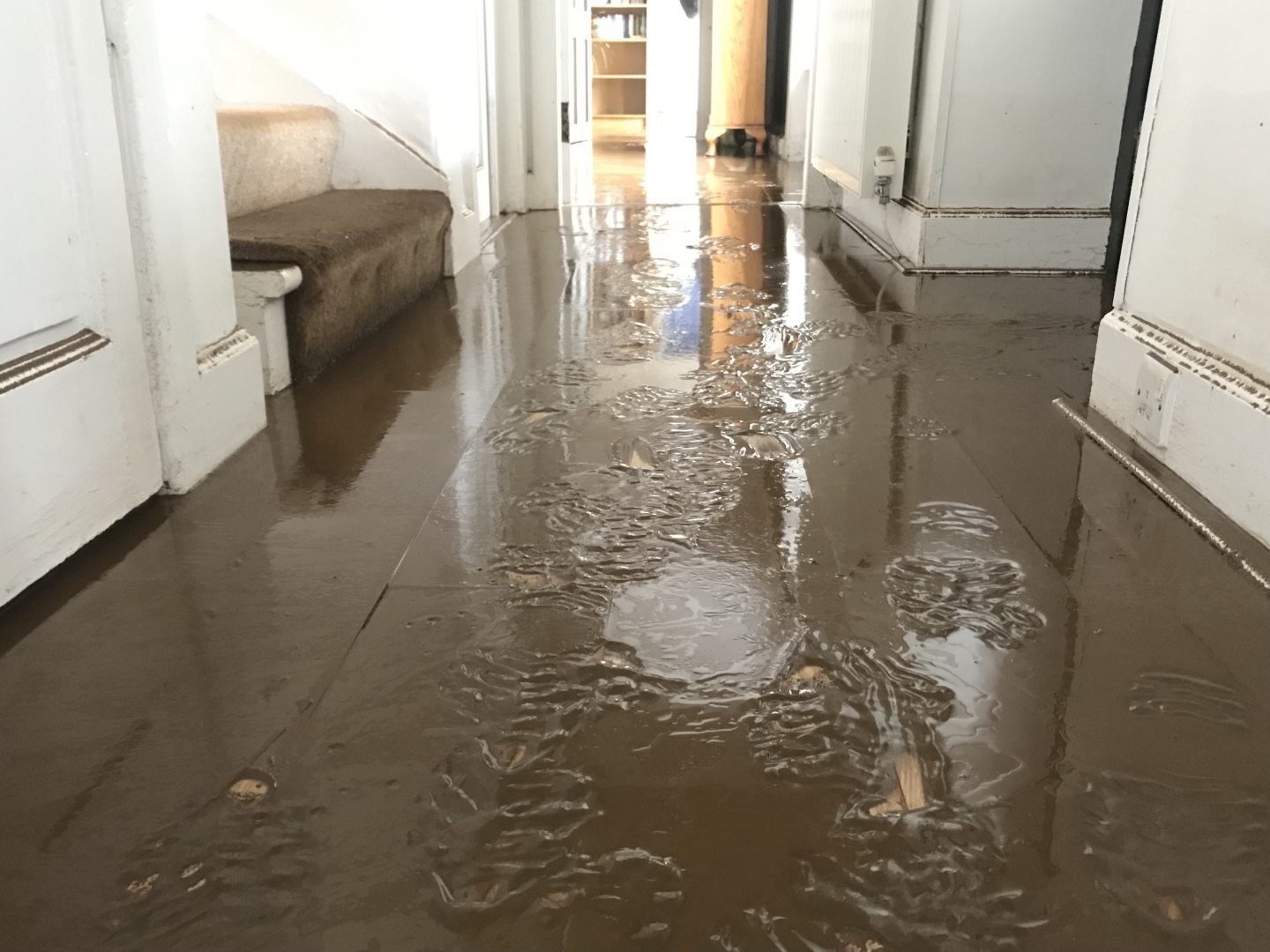Nine months ago, a rain swollen South Esk river surged into my home, causing instant devastation.
My family, like hundreds of others in the north-east, had been hit by flooding caused by Storm Babet – a storm that tragically claimed three lives in our area, and caused massive damage to infrastructure and farmland. Its scars can still be seen.
We’ll all remember the media storm that surrounded Babet. In the days after it happened, I visited Brechin and clocked news teams from all the main networks.
Journalists pressed councillors and MSPs on their response, and there was urgent business at Holyrood. However, the world continues to turn, and issues as significant as Babet fall off the radar. I’d like to put it back on – especially with a general election on the cards.
Babet wasn’t the first example of extreme weather in Scotland, and it won’t be the last. Those of us who’ve been bitten by something like flooding are keenly aware of this – our ruined homes being a painful reminder. But decision-makers need to be aware, too. Their actions in the coming years will dictate whether communities in Scotland are ready for, and protected from, the storms of tomorrow, or left vulnerable to the same destruction we’ve witnessed.
Many residents were uninsured when Storm Babet hit, and they lost everything. We know of vulnerable, elderly locals and disabled people forced out of their homes who don’t know if they’ll ever return. When you look at the wider picture of climate change, the marginalised in society are worst affected. It’s crucial that authorities in Scotland serve these groups well.

The community response to Storm Babet has been remarkable. Local organisations and volunteers in our area have worked hard to provide flooding victims with furniture, clothes, appliances, and financial assistance. There’s a strong solidarity between those who’ve been affected, and people are eager to help one another out.
In the months after Babet, victims were offered a grant of £1,500 by the Scottish Government. Our council also offered various forms of support to residents. We’re grateful for this, but it isn’t sufficient in itself, and it certainly mustn’t be the last support we see.
Climate change is seen as a driver of extreme weather events in Scotland. Many people in my area believe the question we face is “when” not “if” another big flood is coming. And they want reassurance that their homes will be protected if they live in high-risk areas.
But many residents don’t feel they are being included in conversations about how their community prepares for future events. In Brechin, the wing wall of a historic bridge has been rebuilt for aesthetic reasons, when many people think it should be incorporated into a new, bolstered flood defence wall. There’s confusion about why this decision was made.
Many believe Brechin’s flood defence wall should be strengthened and extended significantly to protect a wider area of the town. There’s concern about the structural integrity of some housing that was severely affected by Babet.
And good flood management means assessing a much wider area. Peatland restoration, tree planting, and blocking smaller waterways in the Angus Glens are some ideas that have been mooted as potential ways to mitigate flooding.
Residents in neighbouring Montrose are concerned about coastal erosion. It’s a massive, and historic, issue in the town that needs urgent attention. Coupled with Brechin and other communities across Angus and the Mearns affected by flooding, there’s a lot to contend with in the north-east alone. And people across Scotland face similar challenges.
Our governments must make a long-term flooding plan
This whole subject requires significant attention. I’d like to see the Scottish Government working with local authorities and the next UK Government – whatever colour it is – to plan for the longer-term.
The public needs to be aware of what’s being considered, and empowered to feed into decision-making. This isn’t just a political issue – it’s a social one. And a matter of justice, given many people simply don’t have the means to recover from a devastating weather event.
To truly help Scots in affected areas, our politicians need to be proactive. They need to consult expert bodies, speak to relevant communities, and ring-fence significant funding for projects that are truly future-proof. Then, they need to deliver.
This is the kind of stuff that should occupy manifestos. I’ll be looking to see what’s proposed before casting my vote, and I’d encourage you to do so as well.
Jamie Gillies is a commentator based in the north-east of Scotland



Conversation